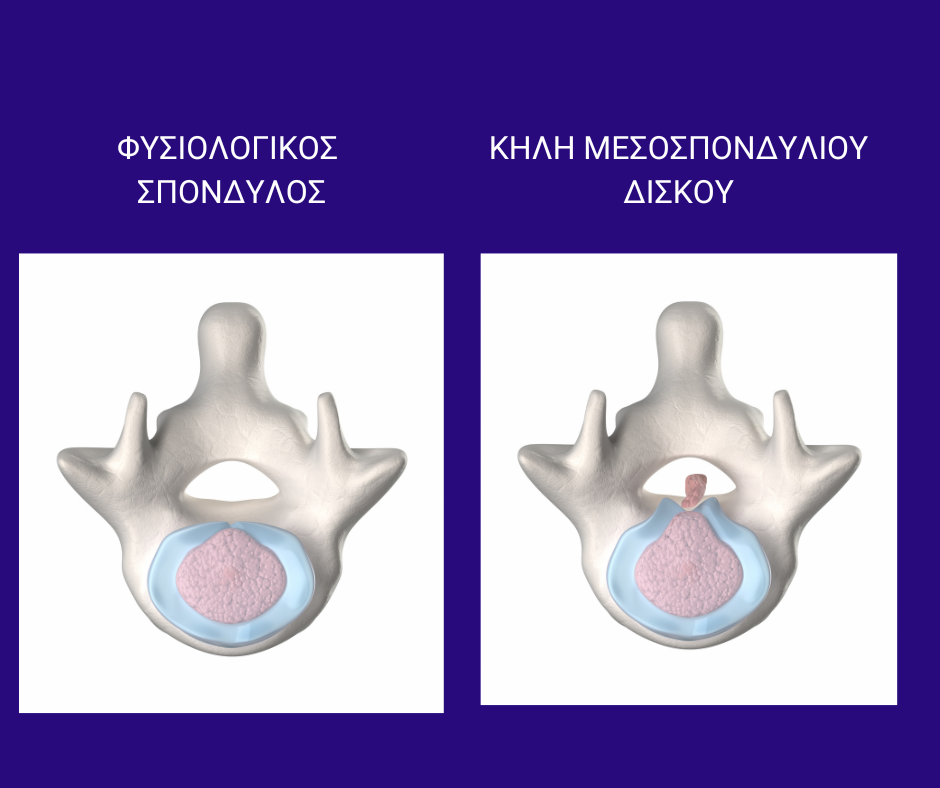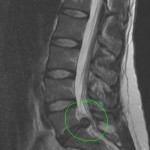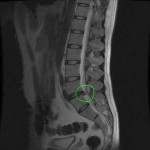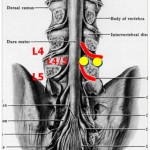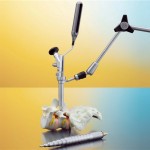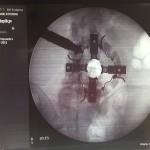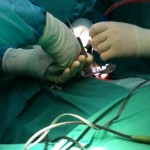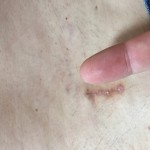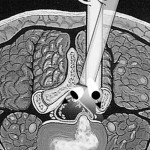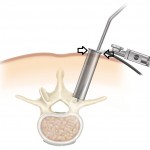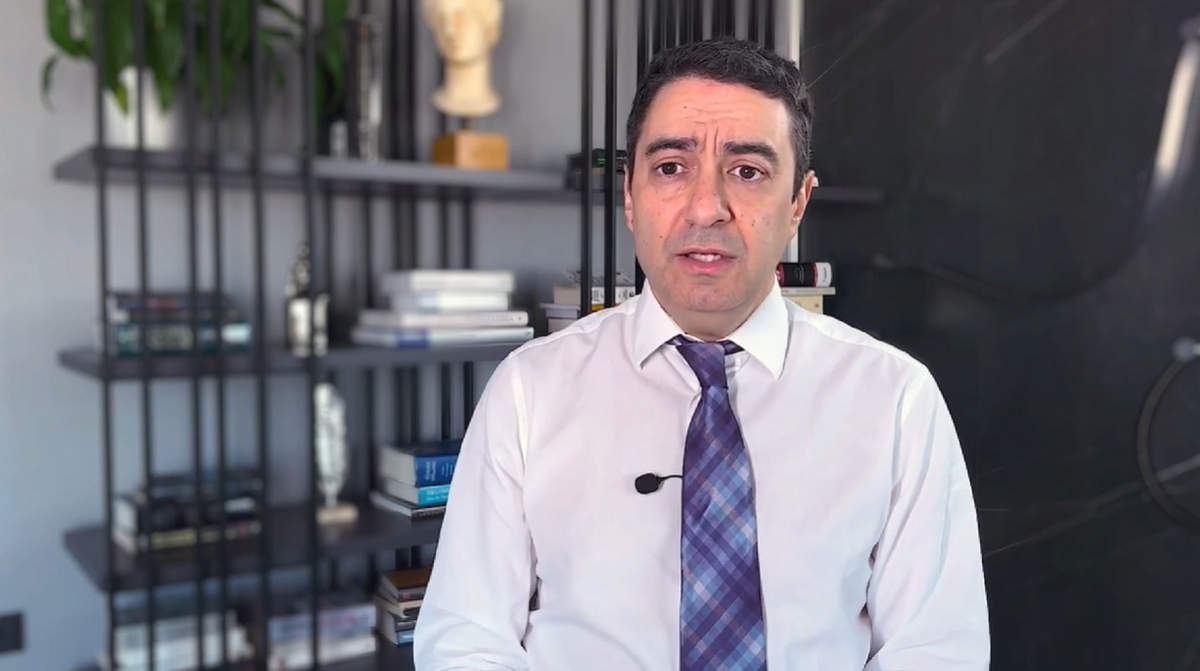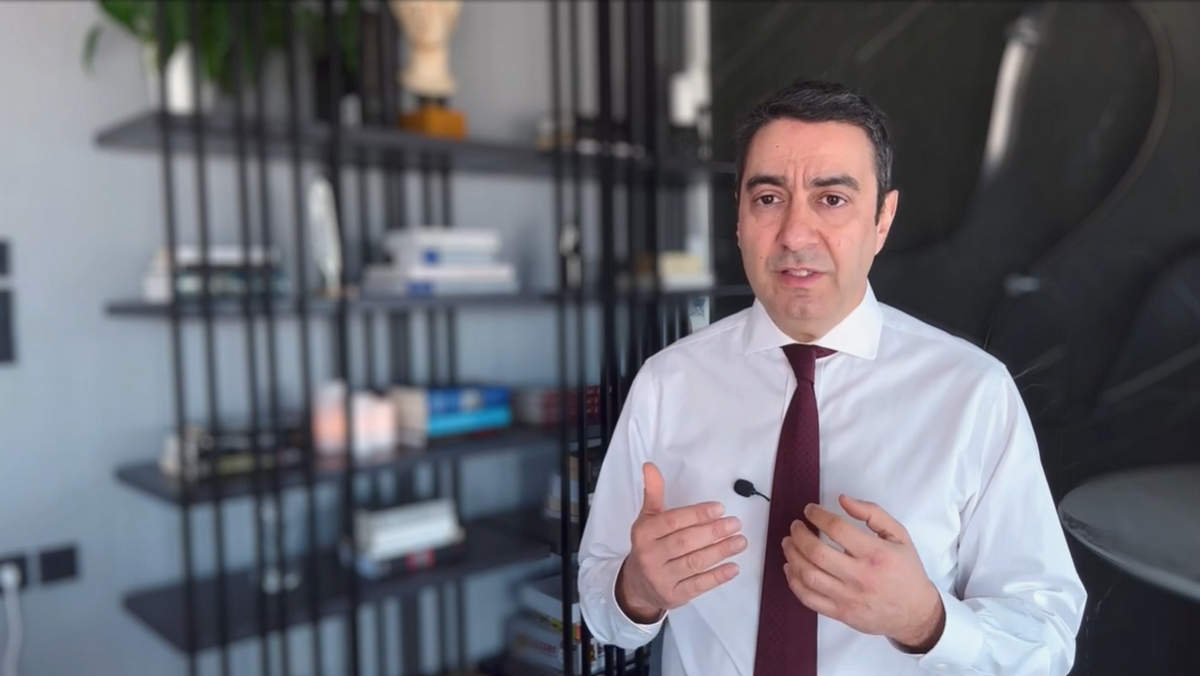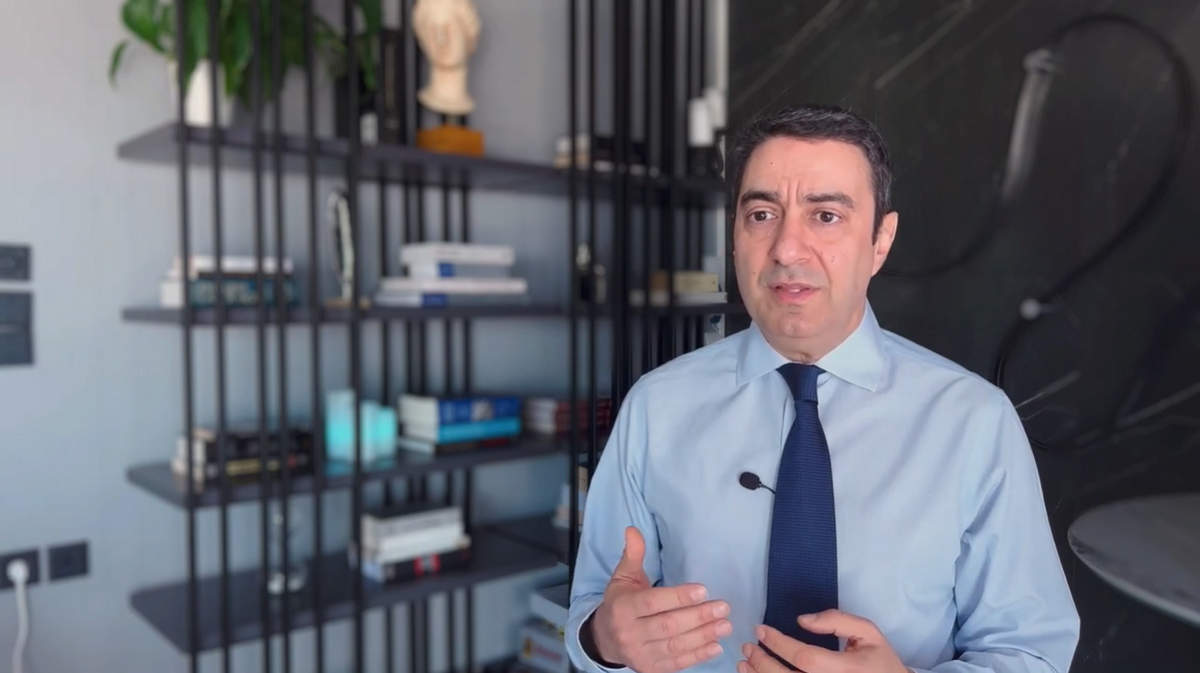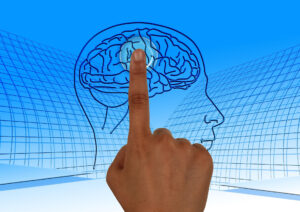What is a lumbar disc herniation?
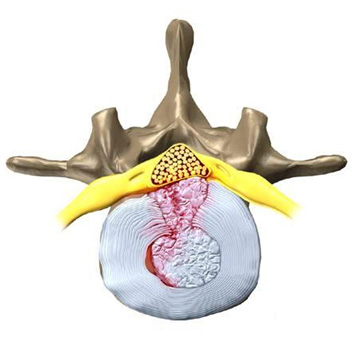
Prolonged back pain (pain in the lower back), or sciatica (pain along the lower limb), that does not go away with the usual means (medication, bedrest, physiotherapy), is most likely caused by an intervertebral disc herniation (slipped disc).
As shown in the picture, the fibrous ring (on the periphery of the disc) ruptures and the soft inner part of the disc comes out (hernia), exerting pressure on the nerve roots.
Symptoms depend on the extent of the hernia. It can occur only in the lower back, or in combination with pain in the lower limb that radiates to the sole and limits daily activities.
If neglected, or if the rupture of the disc causes acute (sudden) pressure, there may be weakness in the lower limb or even disturbances in the sensory perception of the foot, the genital area, or disorders of urination and bowel movements. The last 3 symptoms are part of the so-called “cauda equina syndrome (CES)“, a condition that requires immediate surgery.
The typical surgery usually consists of a so-called discectomy (or micro-discectomy, if performed under a surgical microscope). In it, part of the intervertebral disc that presses on the root or roots is removed. It is a common operation with typically good results.
New surgical method, with minimally invasive technique
Surgery has now evolvedeven more. We can now perform these surgeries with even smaller incisions (up to 1.5 cm), transdermally, i.e. without any injury to the muscles, without detachment of the muscles from the bone, and without removal of bone parts. This surgery is called “Percutaneous Microdiscectomy”
Discectomy is performed under the surgical microscope, through a small tube. The method is frequently used by specialized spine surgeons globally, and in Greece.
The simultaneous use of the endoscope gives us even greater precision and safety. In this way, if there is Spinal Stenosis, the traditional and painful surgery called “laminectomy” is no longer needed. Through the same small incision, there is a full decompression of the narrow spinal canal and the nerve roots on both sides (left and right):
This would practically mean that all patients, regardless of age, can undergo these surgeries, with minimal postoperative pain and immediate mobilization.
Typically, spinal surgeries cause fear and insecurity in patients. There is previous experience of surgeries such as laminectomy, placement of implants inside the intervertebral disc, and open spinal ligation, whose success rates were lower, often accompanied by long-term postoperative pain, while there are many cases of patients suffering from chronic neuropathy, or undergoing multiple surgeries with questionable results.
All this now belong to the past. Currently, spinal surgery methods have evolved to the highest level, and the rates of complications (such as infection, hemorrhaging, or neurological damage) are virtually zero.

